I love you, fruitful and pious land, and I admire you,
and I touch you, and I fill my hands with you,
and over you I bow my face, greedy, and
your healthy perfumes, grateful, I aspire;
and in you the eye turning, in a short tour
I discover mountains and forests and valleys and plains,
…
(Edmondo de Amicis, Alla Terra)
Often our visitors ask us why viticulture in Bolgheri did not develop in the hills. In fact, it mainly includes the foothills and lowlands. This question is understandable: how many times have you heard that the best viticulture is that on the hills? “Bacchus amat colles“, Bacchus loves the hills, also wrote Virgil in the Georgics. Why is it not like this in Bolgheri (and elsewhere)? Because here there is so much sun 🙂 Let’s try to understand better why.
Before answering this question, I invite you to reflect on the fact that, as in many other fields, also in wine there are some rules that may seem general but that, with a less superficial approach, you can understand that they are not exactly valid in all cases. The simplifications (or clichés) aren’t rappresentative of the multiform diversity of the wine production. As I have often reminded you, viticulture is always local. The viticultural choices can change a lot between the territories, even between the vineyards. It is the particular conditions of soil, climate, micro-climate and variety that determine the best choices on where and how to create a vineyard, as well as on how to manage it. We must consider them if we want to make a great wine, a local wine with its splendid uniqueness.
Sometimes people tend to generalize using as a reference the choices of successful territories or famous producers or the reality they know best. However, if you approach a territory with prejudices, it becomes truly impossible to understand its peculiarities. The generalization is even more risky for the wine producers: reproducing ottimal patterns from other territories or companies in the vineyards can lead to errors which are then paid. In a suitable territory for the winegrowing, the lack of understanding of the vineyards is the great discriminating factor between the production of a great wine or not. The viticultural zoning studies are used precisely for this, to help producers make the best choices for their micro-realities (not to make quality rankings as is often thought). Bolgheri was one of the first Italian wine territories to do the viticultural zoning studies, carried out in the early 90s and continued until 2004, conducted by the University of Milan under the guidance of prof. Attilio Science.
So, let’s go back to the original question. The concept of the higher quality of hillside viticulture was born correctly in territories with continental or similar climates. They are places where water is generally not lacking, indeed they are on average (or very) rainy. In these cases, the valley floor or the plains are places where there is an abundance of water, they are often also humid or even the water can stagnate in the soil. The vine is a very rustic plant but humidity is the worste condition for it. Too much water availability in general leads to an excess of vigor, which is a limit for the wine quality. The humid climates also cause several serious diseases, such as the downy mildew and the molds that affect the bunch. When the humidity becomes decidedly too high in the soil, major problems can occur to the roots and therefore to the plant itself, the rot and the root asphyxiation.
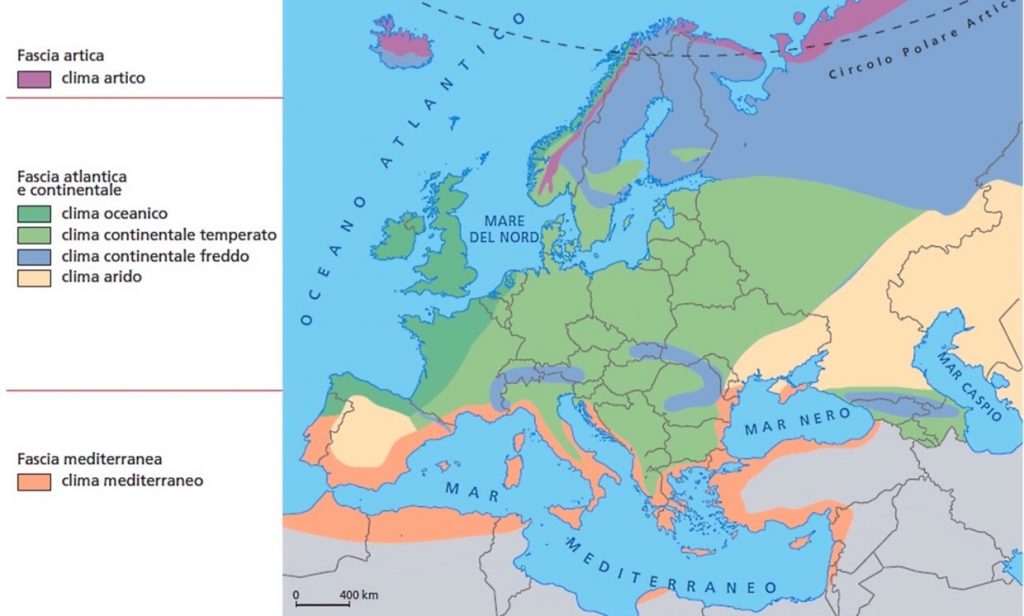
For all these reasons, the sides of the hills are often the most suitable for the vine in the territories characterized by these situations, because these places are the least humid and not too fertile. The problem of soil moisture is avoided: the water flows downwards, so the hilly soils are the most drained and dry. There are also better exposure to the sun, better temperatures and there is no stagnation of humid air. In the past, in reality, the optimal choice of the hill was often guided by other priorities. The most fertile and water-rich soils were reserved for crops essential for food, cereals or other. Given the rusticity of the vine, the leaner and poorer soils were left to it, often those of the hills, where it was difficult to cultivate anything else.
If these considerations are valid for territories such as those just described, it does not mean that they apply everywhere! There may be lowland areas without humidity problems to which these concepts do not apply. I would also like to add that the current climate change may lead to the modification of many consolidated models.
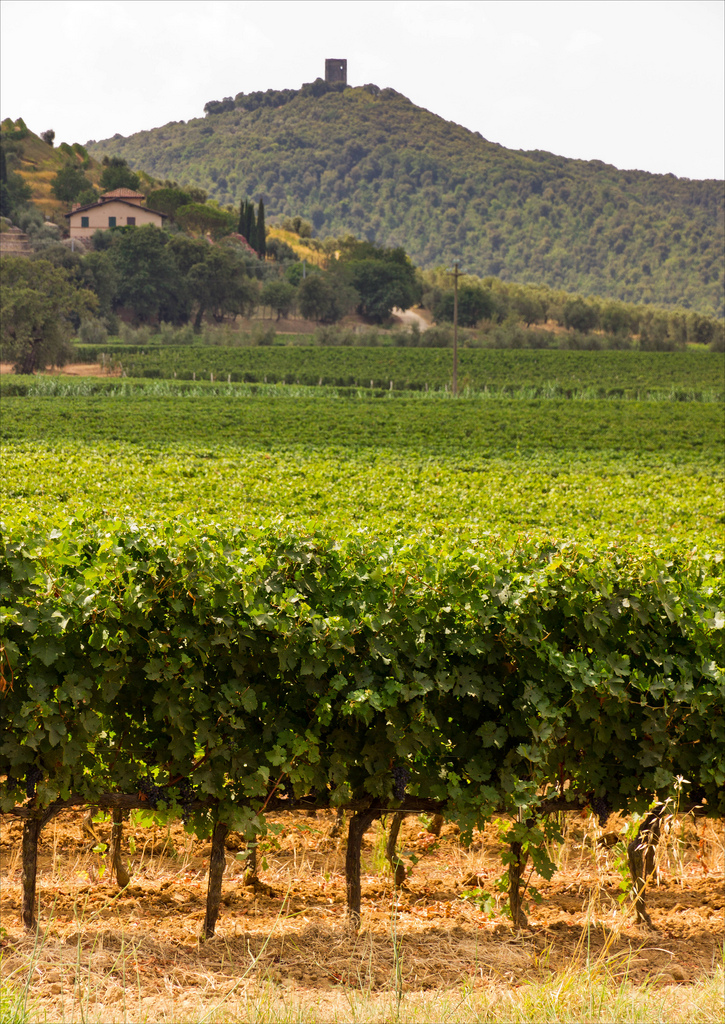
In the Mediterranean territories, such as Bolgheri, the climatic situation is completely different. The vine here is indigenous, this is its natural environment and does not even have many phytosanitary problems. What may be missing, unlike the continental areas, is precisely water. As I have mentioned several times, the vine does not need a lot of it, but it must also not be lacking in the important moments of the plant’s cycle, otherwise it can undergo water stress that leads to the production of a few unbalanced grapes. The millennial viticultural experience teaches that the vine must undergo a slight stress to give the best grapes for making wine. Typically, less qualitative situations arise from two extremes: when the vine is too well or when the stress gets too high.
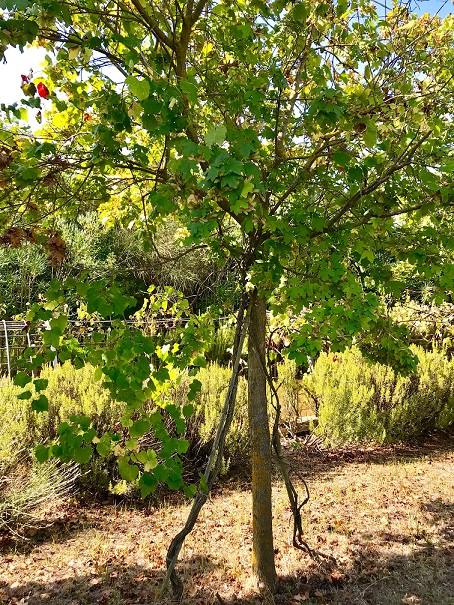
In these climates, the thin hill soils can be too poor and limiting for the vine, especially as regards the water availability. The soils are generally deeper in the foothills or lowland areas, so the roots can develop fully and can find water even in summer, where it has accumulated in the deeper aquifers during the cooler seasons. There is not even too much fertility; on the contrary, there is often the opposite problem: the mineralization of the organic substance in the Mediterranean climate is very speeded up by the high average temperatures. Of course, this is not necessarily the case everywhere: there may be difficult areas in the plains or favorable in the hills. For example, there are areas of the Bolgheri plain where the soils are made thin by superficial tuffaceous crusts. Some soils are poorly drained and flood in the cool seasons. Before deciding where to make a vineyard, a macroscopic examination of the area and then of the micro-situation is essential, with the support of zoning studies and a good geologist.
You will therefore have understood that, in a dry and breezy Mediterranean climate like ours, the continental concept of “low and high” is quite useless for these aspects: down there are no problems of humidity and the solar radiation is abundant everywhere. So, you understand why the right question to ask in many Mediterranean territories is not the altitude of the vineyards but rather the response of the soil to the long dry summer season.
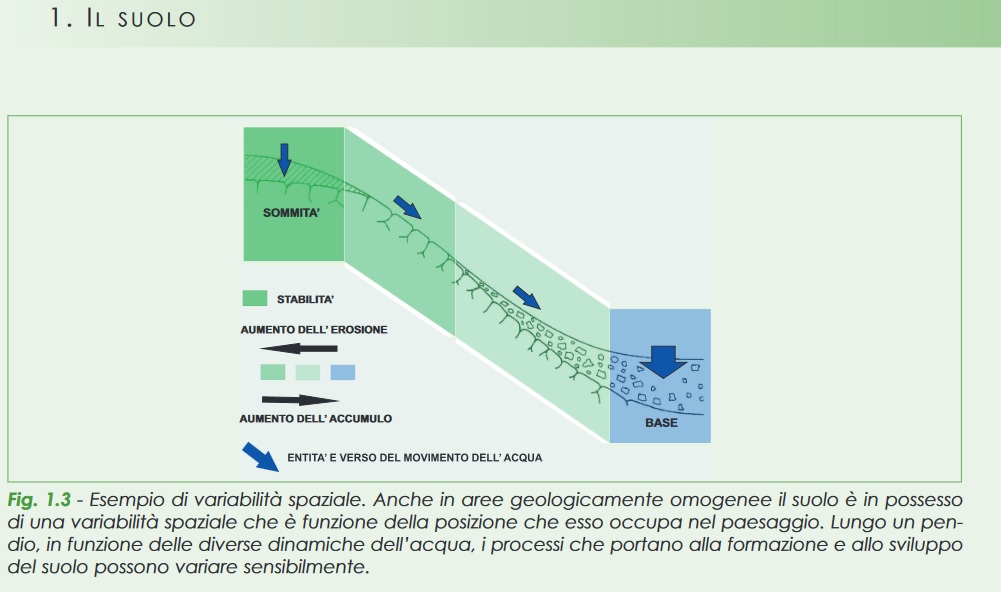
The position of the vineyard in our territory is also important as regards the winds. Certain cold winds (Tramontana from the north and Grecale from the north-east) can be the cause of spring frosts, since the temperature here hardly goes below zero. Therefore, the areas that are too exposed to the winds are more at risk, such as the upper parts of the hills (of the slopes concerned) or the more open areas of the plains. On the other hand, the vineyards of the foothills, protected by the hills, or the areas sheltered by other natural or artificial obstacles (such as woods, rows of trees, etc.) are less exposed.
The main difference between hills and plains in Bolgheri DOC is linked to the differences in temperatures and as regards the summer temperature range between day and night. In general, Bolgheri enjoys a cooler climate on average than the neighboring territories. Inside it, the average annual temperatures are lower in the hilly area and increase going towards the sea. The temperature range is greatest in the small valleys between the hills, lower on the top of the hills and moving towards the sea. It therefore becomes important to understand which types of wines and varieties are best in each condition, without forgetting to correlate these data with the other elements described above, especially with the summer water availability.
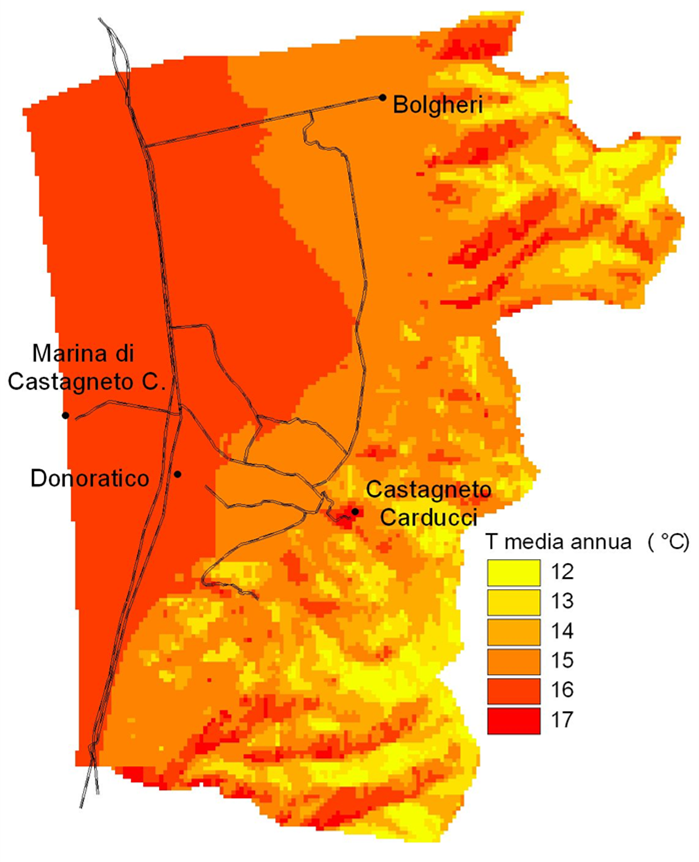
In viticulture, the climate is inevitably related to the soil. It often happens to attribute a greater qualitative value to some soils. In reality this is not always true. There are examples in Italy and around the world of great wines on all types of soils, from predominantly clayey to sandy or silty ones. The texture of the soil (i.e. the size of the soil particles, in the relationships between its various components, from the finest to the coarsest) is important as it affects the expression of the wine characteristics and the work choices of the winemaker. However, it does not necessarily define different qualitative levels, only different sensory characteristics. It is also true that there may be varieties that prefer one or the other type of soil but many others simply give different results. For example, in a very general way, the soils with a higher clay component produce powerfull wines, the sandy soils produce elegant wines. Which are the better? It depends only on personal taste or, at most, on the taste trends of the moment.
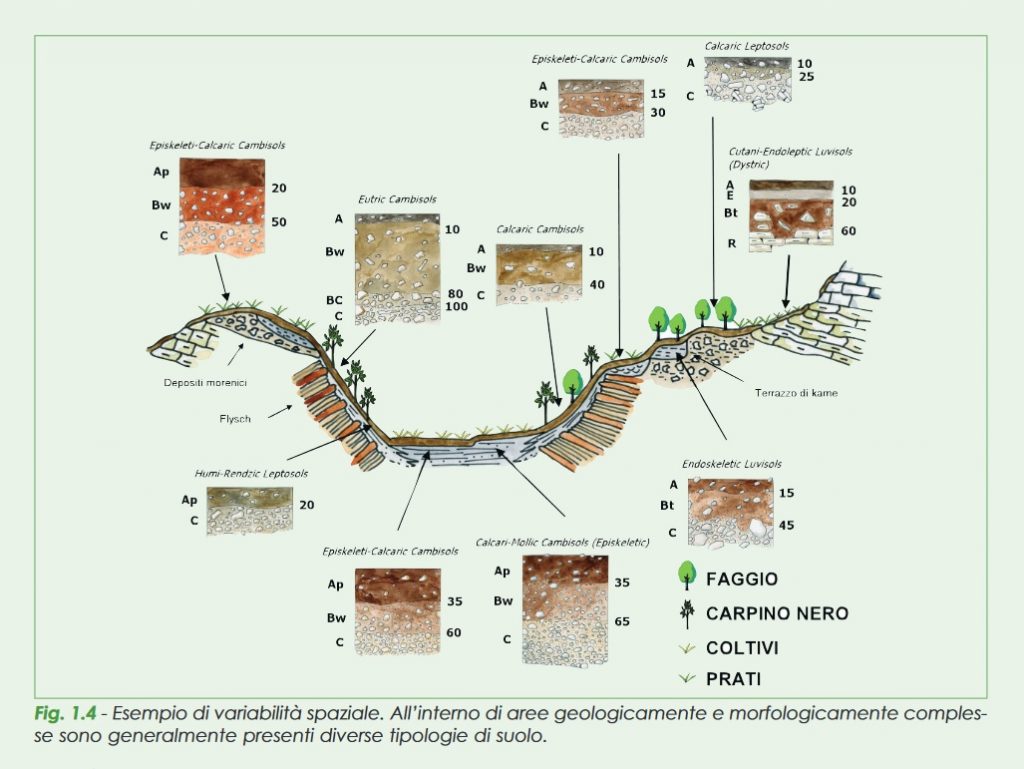
A much more interesting element to understand the balance of the vine (and therefore of the wine), but which is much less talked about, is the depth of the soil, i.e. how much space does the vine really have in order to develop a performing root system (see here and here on the roots). However, it is a very complex topic. The roots will necessarily develop little In a thin soil, which is certainly a limitation in less rainy climates. In areas where there is good water availability, however, it may be of little importance for water, although it can be a limitation for the mineral nutrition. The winemaker must understand that he must intervene more with fertilization. Furthermore, the climate-soil rapport can vary the actual availability of space. For example, a clayey soil in a very arid area can be problematic for the vine, because it becomes hard as a stone for most of the year, effectively reducing the growth capacity of the roots.
In conclusion, I have given several (non-exhaustive) examples of how there is a lot of variability in viticulture compared to certain stereotypes and prejudices, taking the example of Bolgheri Denomination. I therefore hope it is clear that, if a territory is suited to viticulture, the production choices can also be very different. There are no rules that are good everywhere. Instead, there are right or wrong choices for each particular condition. Furthermore, I hope I have clarified that the differences between soils and microclimates are not necessarily indicative of different quality levels, rather of different agricultural needs and different characteristics found in wines or, sometimes, of a better predisposition for certain varieties or types of wines.
Every winery that produces territorial wines knows that the inimitable identity of their products lies in the peculiarities of the vineyards. Only the right choices can enhance them in the wines.